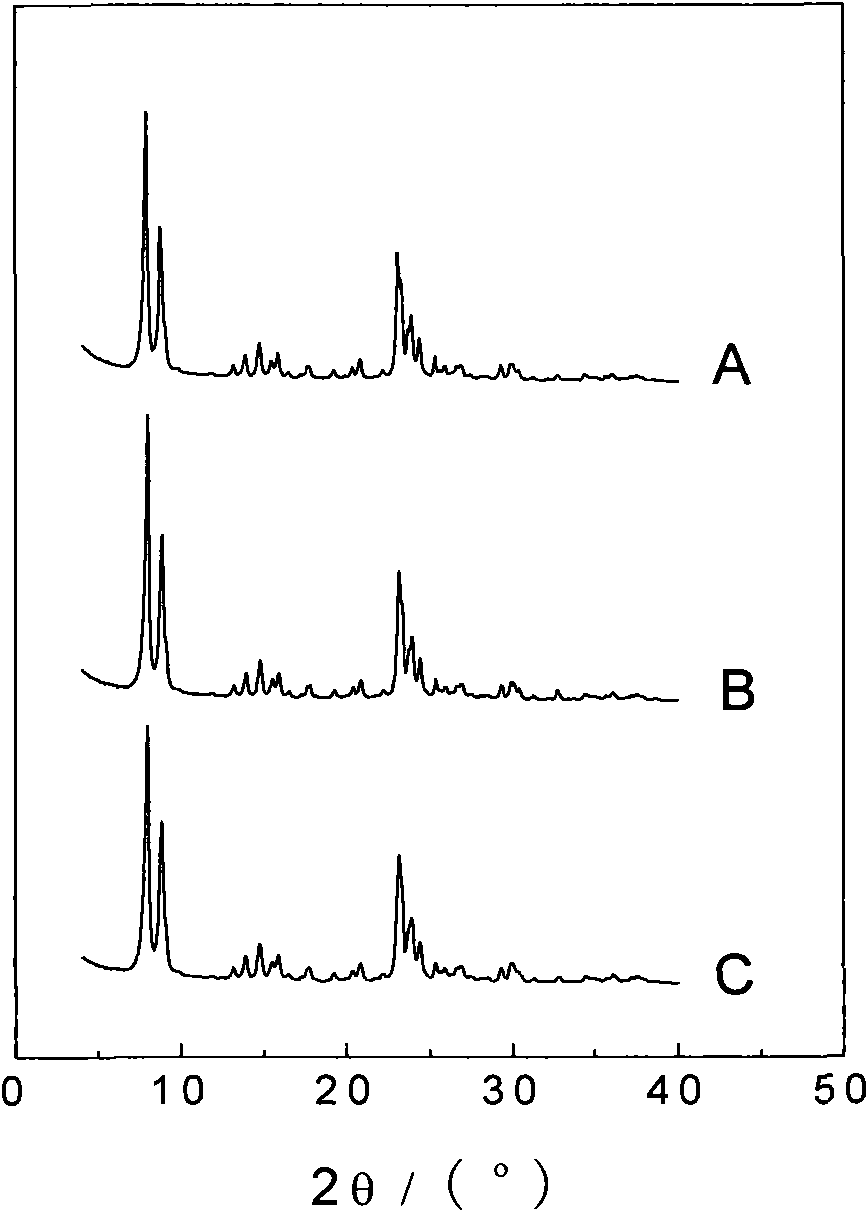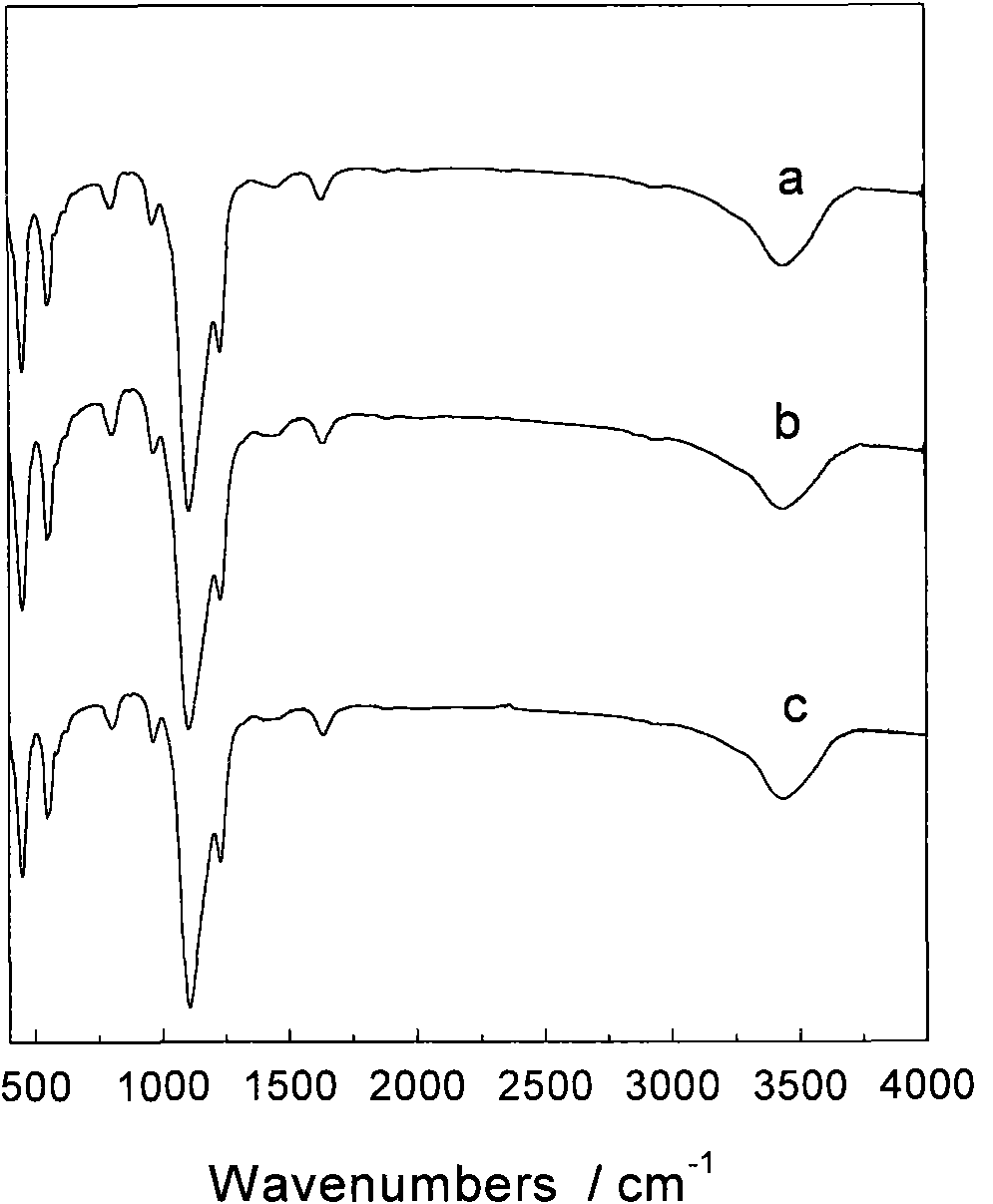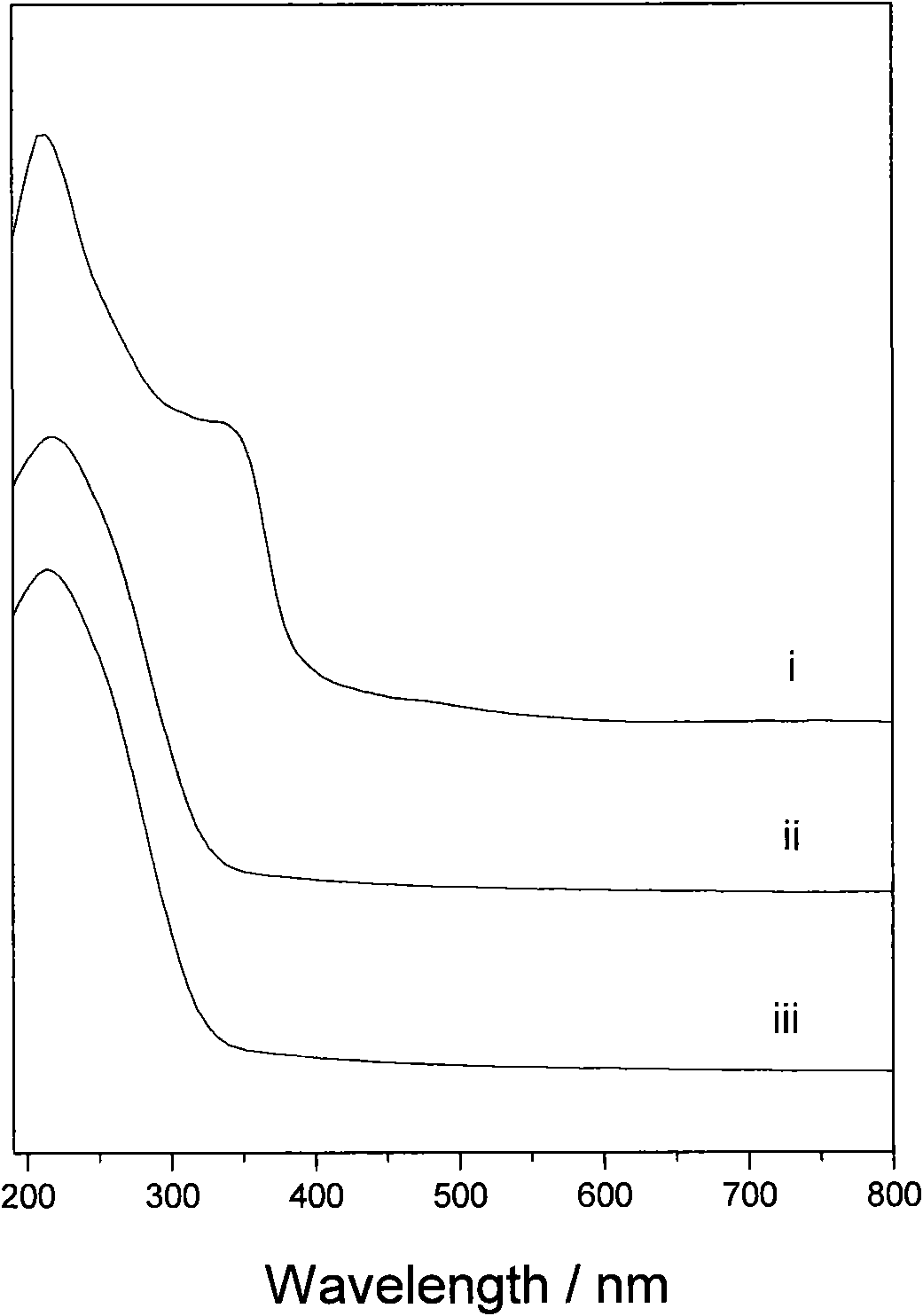Method for modifying titanium-silicon zeolite material
A titanium silicalite modification technology, which is applied in the field of modification of titanium silicalite materials, can solve the problems of easy deactivation, low activity of titanium silicalite, poor selectivity and activity stability, etc., and achieve the improvement of catalytic oxidation activity, good The effect of catalytic activity stability
- Summary
- Abstract
- Description
- Claims
- Application Information
AI Technical Summary
Problems solved by technology
Method used
Image
Examples
Embodiment 1
[0033] Add 20 grams of titanium silicalite TS-1 into the tetrapropyl ammonium hydroxide aqueous solution containing sucrose and stir and mix evenly, wherein titanium silicalite (gram): sucrose (mol): tetrapropyl ammonium hydroxide (mol): water (g) = 100:0.2:0.05:600. Then put it into a stainless steel sealed reaction kettle, hydrothermally treat it at 100°C and autogenous pressure for 8 hours, and then hydrothermally treat it at 150°C and autogenous pressure for 48 hours, filter the resultant, wash with water, dry naturally, and heat at 580°C The modified titanium silicalite material A was obtained by calcining at low temperature for 3 hours.
[0034] The XRD crystal phase diagram of A is as follows figure 1 Shown in Curve B. The Fourier transform infrared spectrum of A is as follows figure 2 As shown in curve b, at 960cm -1 The infrared absorption peak that all-silicon molecular sieves do not have appears nearby, indicating that titanium has entered the molecular sieve f...
Embodiment 2
[0036] Add 20 grams of titanium silicalite TS-1 into the sodium hydroxide aqueous solution containing starch and stir and mix evenly, wherein titanium silicalite (gram):starch (mol):sodium hydroxide (mol):water (gram)=100: 0.01:1.2:3500. Then put it into a stainless steel sealed reaction kettle, hydrothermally treat it at a temperature of 110°C and an autogenous pressure for 4 hours, and treat it at a temperature of 180°C and an autogenous pressure for 24 hours. Roast for 3 hours to obtain the modified titanium silicalite material B.
[0037] The XRD crystal phase diagram of B is as follows figure 1 Curve C is shown. The Fourier transform infrared spectrum of B is as follows figure 2 As shown in curve c, at 960cm -1 The infrared absorption peak that all-silicon molecular sieves do not have appears nearby, indicating that titanium has entered the molecular sieve frame, 960cm -1 Absorption peak at and 550cm -1 Absorption peak intensity ratio I 960 / I 550 The data are li...
Embodiment 3
[0039] Add 20 grams of titanium silicalite TS-1 into the tetrapropyl ammonium hydroxide aqueous solution containing furfural and stir and mix evenly, wherein titanium silicalite (gram): furfural (mol): tetrapropyl ammonium hydroxide (mol): water (gram)=100:0.04:1.0:1200. Then put it into a stainless steel sealed reaction kettle, hydrothermally treat it at a temperature of 120°C and an autogenous pressure for 10 hours, then hydrothermally treat it at a temperature of 170°C and an autogenous pressure for 48 hours, filter the resultant, wash it with water, dry it naturally, and heat it at 480 The modified titanium silicalite material C was obtained by roasting at 8°C for 8 hours.
[0040] The XRD crystal phase diagram of C has figure 1 Characteristic of Curve A. Infrared spectrum of C 960cm -1 Absorption peak at and 550cm -1 Absorption peak intensity ratio I 960 / I 550 The data are listed in Table 1. The UV-Vis spectrum of C has image 3 The characteristics of curve ii ha...
PUM
 Login to View More
Login to View More Abstract
Description
Claims
Application Information
 Login to View More
Login to View More - R&D
- Intellectual Property
- Life Sciences
- Materials
- Tech Scout
- Unparalleled Data Quality
- Higher Quality Content
- 60% Fewer Hallucinations
Browse by: Latest US Patents, China's latest patents, Technical Efficacy Thesaurus, Application Domain, Technology Topic, Popular Technical Reports.
© 2025 PatSnap. All rights reserved.Legal|Privacy policy|Modern Slavery Act Transparency Statement|Sitemap|About US| Contact US: help@patsnap.com



